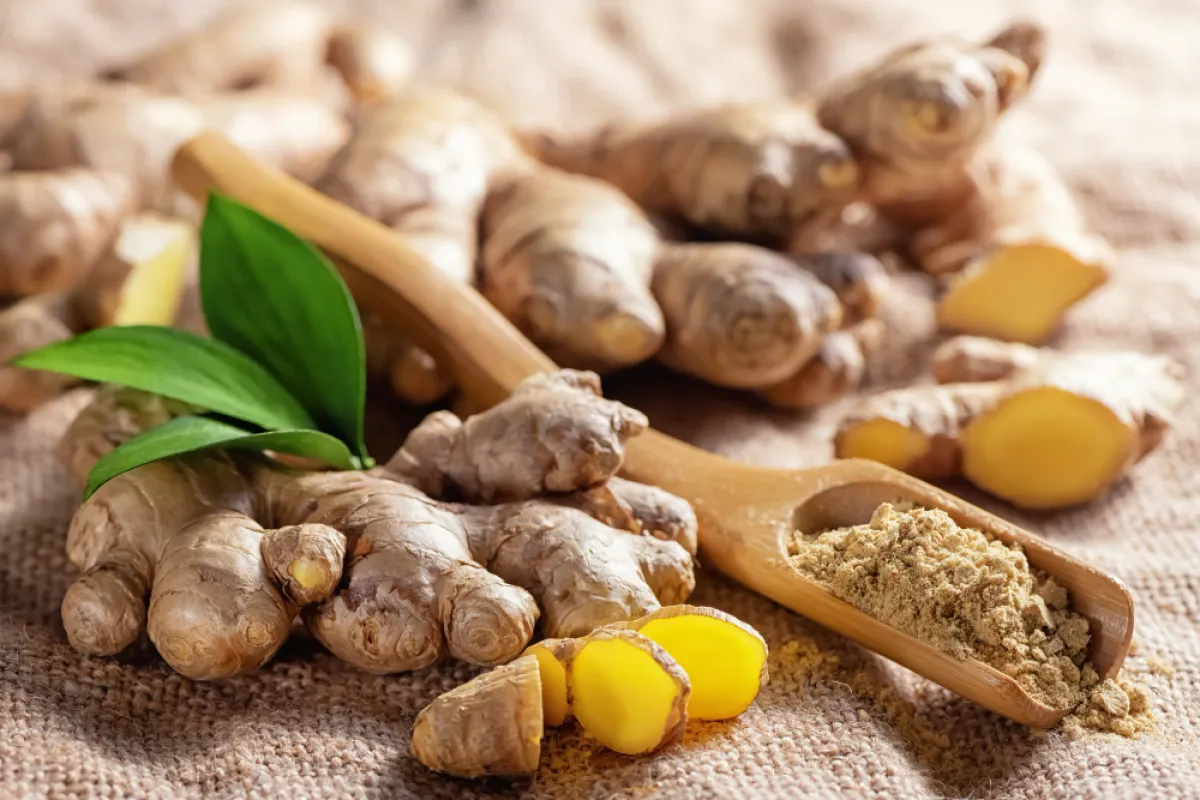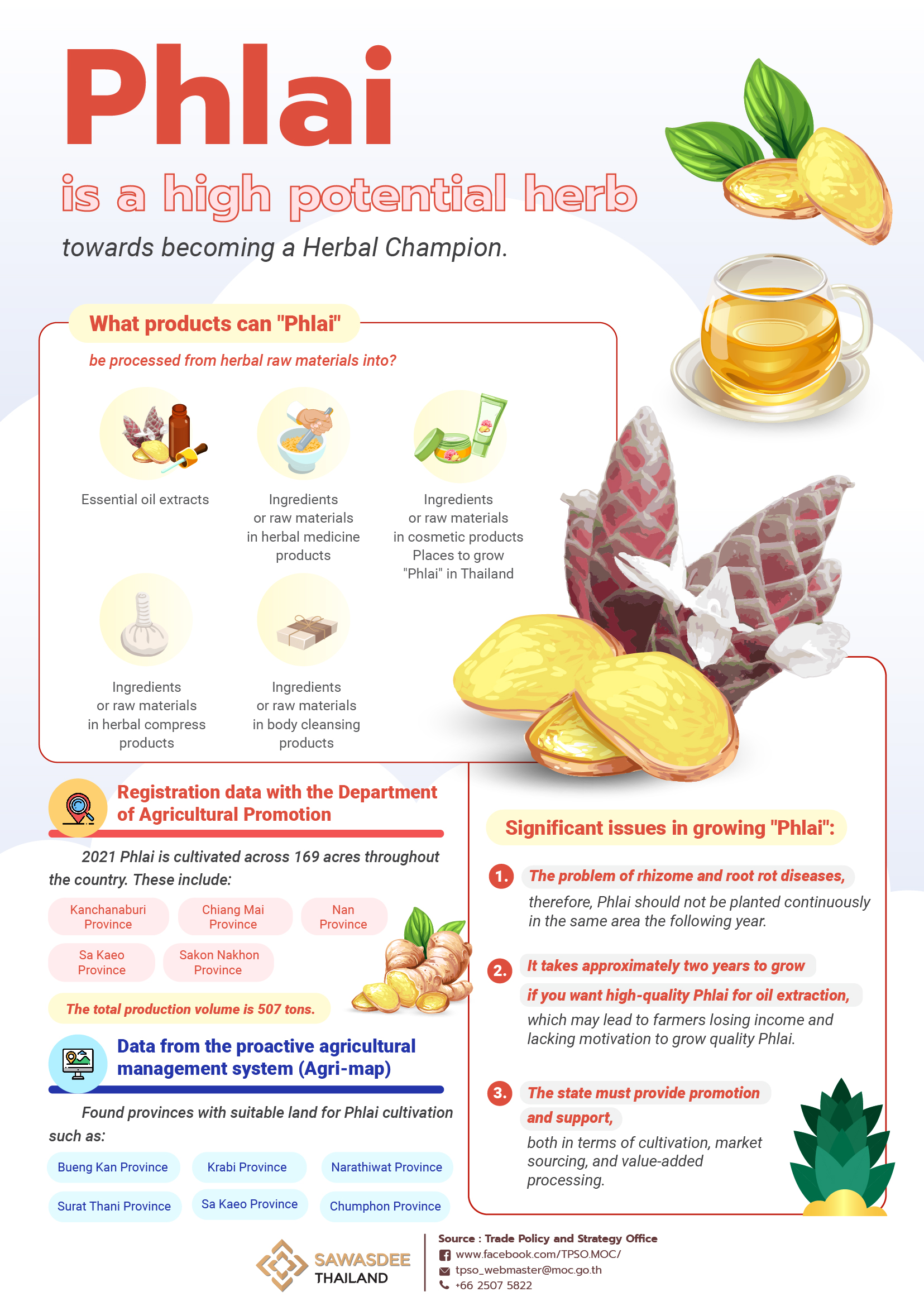
When it comes to Thai herbs, they are recognized for their valuable benefits and medicinal properties. Therefore, the Trade Policy and Strategy Office (TPSO) has collaborated with the industrial sector and communities, along with the National Science and Technology Development Agency (NSTDA), to study and analyze the trading opportunities for the Thai herb "Phlai" (Cassumunar ginger), which is one of the potential herbs to be promoted as a Herbal Champion.
From the study of Phlai, it is one of the herbs with high economic potential that can be processed from raw herbal materials into various products, such as extracts, essential oils, and can be used as ingredients or raw materials in other products, such as herbal medicine, herbal compresses, body cleansing products, and cosmetics.
As for products containing Phlai, the wisdom of the locals uses it as an ingredient in herbal compresses, body wraps, skin disease treatment, and the Phlai rhizome is fried in coconut oil or sesame oil for use in ointments, rubs or massages. Later, technology began to be used in the process of extracting essential substances from Phlai, making Phlai oil more effective, such as Phlai oil cream for massage, Phlai inhalant, and products that contain Phlai. These products have a high potential for growth in both domestic and international markets.
For products incorporating Phlai, local wisdom is utilized to incorporate it into various forms such as herbal compress balls, body care products, and treatments for skin diseases. Additionally, the rhizomes of Phlai are often fried in coconut oil or sesame oil and used for topical applications or massages. Technology is being increasingly employed to extract key components from Phlai, leading to high-efficacy Phlai oil products, such as Phlai massage creams and inhalants. There is a high potential for growth in both domestic and international markets for products that include Phlai.
According to registration data from the Department of Agricultural Promotion, in 2021, Phlai was grown across 169 acres throughout the country. Key production areas are Kanchanaburi, Chiang Mai, Nan, Sa Kaeo, and Sakon Nakhon, with a total yield of 507 tons, significantly lower than the production volumes of 1,935 and 1,539 tons in 2020 and 2021, respectively. This indicates that the domestic demand for Phlai in Thailand is still high, as the total exports from 2015 to 2021 were only 2.17 tons. The average price for fresh Phlai is 12 baht per kilogram, dry Phlai 100 baht per kilogram, powdered Phlai 150 baht per kilogram, and aromatic oil 5,000 baht per kilogram.
Furthermore, according to the proactive agricultural management system (Agri-map), provinces with suitable land for Phlai cultivation include Bueng Kan, Krabi, Narathiwat, Surat Thani, Sa Kaeo, and Chumphon. A significant problem in Phlai cultivation is that it should not be grown in the same area continuously due to rhizome and root rot diseases. It requires crop rotation with other types of plants before replanting in the following season. Also, to produce high-quality Phlai for oil extraction, it requires approximately two years of growth, which may discourage farmers due to potential income loss and lack of motivation to cultivate quality Phlai. Therefore, state support and encouragement in terms of cultivation, market sourcing, and value-added processing is crucial.
Products containing herbal ingredients are popular among health- and beauty-conscious consumers, as reflected by the continually growing retail value of herbal products. Data from Euromonitor International indicate that in 2022, the retail value of herbal products in the global market amounted to USD 56.51 billion. Thailand's market is the eighth largest in the world, following China, the United States, Japan, South Korea, Germany, Italy, and Taiwan, with a value of USD 1.5438 billion. It is projected that in 2023, the market will be worth USD 1.6765 billion, an expansion of 8.6 percent.
Data updated on April 12, 2023
Source: Trade Policy and Strategy Office
Tel. +66 2507 5822
